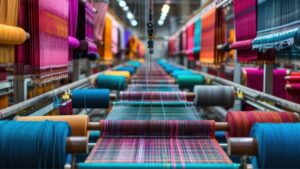 Even as the global apparel retail market struggles to maintain footfall, a new report by Global Industry Analysts (GIA) predicts that the global sports and fitness clothing market would reach US $ 126.30 billion by the year 2015, spurred by dramatic lifestyle changes, increasing sports participation particularly by women, and demand for stylish, functional and versatile sports apparel. In addition, with rapidly aging population, there is a definite emphasis towards healthy lifestyle and activities such as sports, yoga and jogging, all expected to play an instrumental role in driving future growth.
Even as the global apparel retail market struggles to maintain footfall, a new report by Global Industry Analysts (GIA) predicts that the global sports and fitness clothing market would reach US $ 126.30 billion by the year 2015, spurred by dramatic lifestyle changes, increasing sports participation particularly by women, and demand for stylish, functional and versatile sports apparel. In addition, with rapidly aging population, there is a definite emphasis towards healthy lifestyle and activities such as sports, yoga and jogging, all expected to play an instrumental role in driving future growth.
Blurring lines of differentiation between sports apparel, fitness clothing, and casual, active wear are expanding the market reach and target audiences for sportswear. While changing lifestyles and growing emphasis on versatility, convenience, fashion, comfort, style, and performance is creating a strong demand for sports and fitness clothing, which offers both functional performance and style appeal. In fact, the GIA report suggests that in terms of consumption growth and overall apparel market share, the segment is expected to garner the highest growth.
[bleft]“Products that today come in the category of the overall sportswear segment, which also includes fitness clothing, are items such as T-shirts, tank tops, shorts, training jackets, wind pants and mesh pants for men; and for women it also adds track tops, sport bras, skorts, tights, capris, baggy pants, leg warmers, tennis dress and long tees.” [/bleft]
The phenomena is worldwide and the aging-but-active population in the US, Japan and Europe, and emerging markets such as Asia and Latin America present attractive opportunities for sports/active wear manufacturers. Even the women of today represent a highly lucrative target audience as they are increasingly taking to an active lifestyle.
On the retail front, conventional sporting goods players vie with fashion stores while department stores compete with mass merchandisers and sporting goods chains, in a bid to capture a pie of this lucrative market.
As consumers are ready to pay more for performance characteristics like temperature regulation, friction reduction, moisture management, stretch, lightness, and wind and water resistance retailers are responding by introducing sports and fitness apparel in various stylish designs for both men and women. Many sports apparel companies are now partnering with famous designers to introduce innovative apparel brands. Favourable trends such as, a stylish teenage marketplace, growing baby boomer segment, and a tendency towards casual dress in the workplace, are expected to drive consumption growth of sports apparel and fitness clothing even more.
Traditionally, sportswear has been dominated by specialty stores and brands in the developed economies, but now the same brands have deep penetration in all markets and are fast expanding roots in emerging markets too. However, now even mainline retailers have recognized the potential of the expanding sportswear/active wear market, prompting Target to open its first ever permanent store without the Target brand name – an exercise clothing outlet called C9 Active Apparel. The C9 store slated to open in October in San Francisco will sell the same sportswear line that Target stores have sold for years as “C9 By Champion”, which include men’s and women’s exercise clothing and accessories such as yoga mats and water bottles, produced exclusively for Target by HanesBrands.
While the US constitutes the world’s single largest and most developed market for sports and fitness clothing, Asia-Pacific is considered to have the fastest growth potential with rapidly expanding markets of India, China, Hong Kong and Australia, predicted to expand at least 4% through 2015. Changing lifestyle of Indians (especially youngster) with greater disposable income and people becoming more health conscious are facilitating greater spending on sportswear. It is projected that the sports apparel market will reach 14.29 billion US $ by 2014, growing at a CAGR of around 34%. However the limited manufacturing capabilities in sewing sportswear and the non-availability of the right fabric is a deterrent to its growth as a manufacturing hub.






